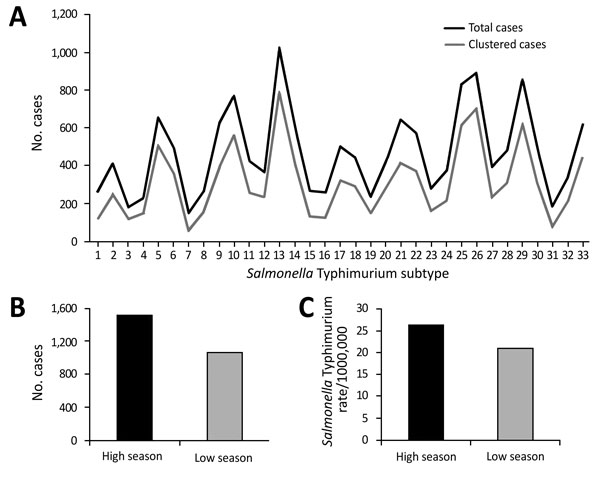Volume 24, Number 6—June 2018
Dispatch
Novel Salmonella enterica Serovar Typhimurium Genotype Levels as Herald of Seasonal Salmonellosis Epidemics
Figure 1

Figure 1. Trends of Salmonella enterica serovar Typhimurium notifications and multilocus variable-number tandem-repeat analysis (MLVA) patterns, New South Wales, Australia, 2009–2016. A) Quarterly counts of total cases and cases clustered by MLVA. B) Mean sum of Salmonella Typhimurium notifications for summer and autumn quarters for high and low seasons observed (p = 0.01). C) Differences in mean yearly rates of salmonellosis cases reported to the New South Wales Health Department between years corresponding to high and low seasons (p = 0.02). Data source: National Notifiable Diseases Surveillance System (http://www9.health.gov.au/cda/source/).
Page created: May 17, 2018
Page updated: May 17, 2018
Page reviewed: May 17, 2018
The conclusions, findings, and opinions expressed by authors contributing to this journal do not necessarily reflect the official position of the U.S. Department of Health and Human Services, the Public Health Service, the Centers for Disease Control and Prevention, or the authors' affiliated institutions. Use of trade names is for identification only and does not imply endorsement by any of the groups named above.